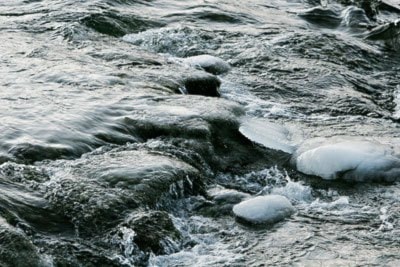The Yukon must do a better job at protecting drinking water, according to Ecojustice.
The environmental charity gave the territory a D-plus for drinking water protection in a report issued last week.
But that doesn’t mean that the Yukon’s water is unsafe to drink.
“The quality of the Yukon’s drinking water is actually superb,” said Wes Wirth, the director of community operations and programs for the Department of Community Services. “I think the grading was a little harsh.”
The grade Ecojustice gave the territory was based on an analysis of source water treatment requirements.
“We looked at all steps the government takes to protect drinking water from the source to the tap,” said Randy Christensen, Ecojustice staff lawyer and author of the report.
This is the third such report that Ecojustice has written.
The last one was done five years ago.
Back in 2006 the Yukon received a C-minus.
The lower grade the territory got this year was the result in a change in methodology, not a change in the government’s policies, said Christianson.
Forty per cent of the grade is based on the protection of water while 60 per cent of the grade is based on the treatment regime.
The report is designed to track the recommendations made from the Walkerton inquiry.
Walkerton is the small Ontario town where, 11 years ago, more than 2,000 residents were sickened by E. coli bacteria from a contaminated municipal well.
Seven people died after drinking the water.
A criminal investigation revealed the towns’ public utilities manager and water foreman had falsified reports, failed to properly monitor chlorine residuals, and engaged in a host of other improper practices.
Both men were criminally charged for their part in the tragedy.
The Walkerton Inquiry made more than 90 recommendations.
Many centered around a comprehensive multi-barrier approach to source water protection. Basically, the goal was making sure water sources are protected from pollution and contamination, and ensuring water quality standards are tested and maintained.
“The Yukon has a series of recommendations that contain some setback rules that say you can’t locate a water supply within a certain distance of certain activities,” said Christianson. “That’s a good step. I don’t mean to diminish that, but when you look at what public health experts recommended after the Walkerton Inquiry, they recommended a much more proactive approach where each water supply system gets an assessment of potential pathways to contamination, existing threats and future threats, and then create some kind of real protection that would be formally legally enshrined.”
Under Ecojustices’ methodology, the Yukon didn’t fare as well as other jurisdictions.
Ontario led the country with an A.
More than 80 per cent of its municipalities are covered by a source water protection plan.
In the Yukon, only Whitehorse has such a plan.
Though, it should be noted, more than two thirds of the territory’s population lives in that city.
Making sweeping comparisons between regions isn’t necessarily the best approach, said Nancy Campbell, a communications officer with the Yukon Department of Environment.
“Canada’s a big place and it’s hard to have a one-size-fits-all scorecard that fairly reflects what’s going on on the ground,” she said.
The land-use planning process the territorial government has developed, and is developing for several areas, has a lot to do with watershed management, said Campbell.
“It isn’t a wild frontier out there,” she said. “There are a number of processes in place to protect water supplies.”
Almost every project of any size in the Yukon has to go through the Yukon Environmental Socio-Economic Assessment Board.
“The Yukon’s really big and there’s a small number of people so it makes more sense to have a project-driven procedure rather than to try and protect everything on the off chance that something might happen there,” said Campbell.
YESAB assesses about 260 projects a year, analyses the potential effects on the environment and makes recommendations.
“Pretty much every assessment we do, the issue of water quality is one of the top values identified,” said Stephen Mills, chair of the assessment board.
“We start by looking at the baseline conditions and we do a thorough review of the project to see what potential effects that the project may have on both ground water and surface water, and we look at potential effects related to accidents and malfunctions.”
While Ontario sources much of its water from both ground and surface supplies, the Yukon relies almost exclusively on wells for its water.
Groundwater is much easier to protect, said Wirth.
“There are lots of things that we’re doing to be proactive in protecting the water,” he said.
Ensuring wells are protected from contamination is paramount, said Wirth.
Developing municipal source water protection plans would be a good thing, he said. But with so many small towns in the territory, it’s an issue of resources.
“Don’t get me wrong, there’s some value to that. It’s certainly a good thing to do, but you have to figure out where your priorities are,” said Wirth. “I’d rather be concerned that we are delivering safe drinking water to communities as opposed to focusing on the source water protection when we’re not actually drawing our water from that source.”
Contact Josh Kerr at joshk@yukon-news.com
